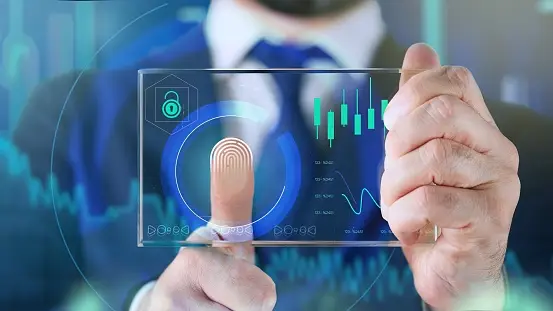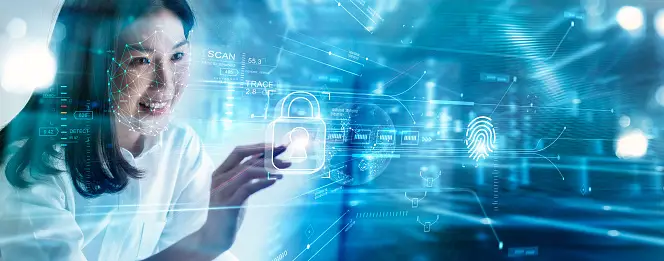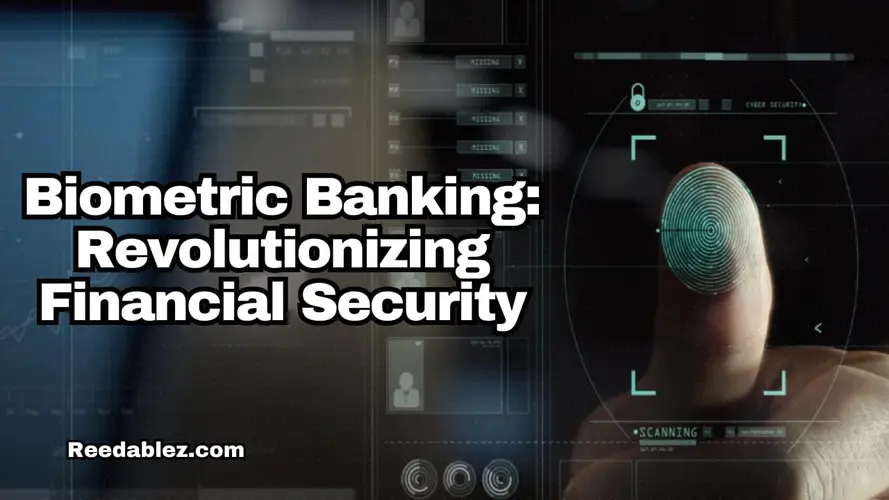Biometric Banking: Revolutionizing Financial Security - Reedablez
Have you ever thought about how vulnerable traditional banking techniques are in our increasingly digital world? As cyber threats expand, the importance of safe and efficient authentication grows. Enter biometric banking, a game-changing development that is transforming the financial security environment. But how can this novel strategy safeguard our hard-earned money in ways that standard approaches cannot? Let us go into the area of biometric banking to find answers to these urgent issues.
Biometrics Redefined: Beyond PINs and Passwords
In the realm of financial transactions, the reliability of PINs and passwords has come into question. Biometric banking emerges as the answer, offering a paradigm shift beyond traditional methods. From fingerprint recognition to facial scans, our unique biometric markers become the keys to unlocking a new era of secure and convenient financial interactions. Biometric banking redefines the very essence of financial security.

Your Identity, Your Currency: Embracing Biometric Uniqueness
As the phrase goes, 'no two fingerprints are same.' All biometric markers follow the same concept, making them irreplaceable and individually linked to your identity. By embracing this uniqueness, biometric banking assures that your money is not only in your hands, but is also inextricably linked to your identity. In the age of biometric banking, the principle of 'your identity, your currency'canprotect your financial assets.

Streamlined Transactions: The Seamless Symphony of Biometrics
Biometrics is the conductor in the orchestra of financial transactions, creating a flawless symphony of security and efficiency. Voice recognition, fingerprint scanning, and face verification have transformed traditional banking into a pleasant experience. How can incorporating biometric identifiers into financial transactions help to orchestrate a secure and faster process?
Privacy Concerns: Addressing the Dark Side of Biometric Banking
While the benefits of biometric banking are clear, privacy and data security issues remain. Addressing these issues head on is critical to the broad acceptance of this transformative technology. How may the negative aspects of biometric banking be managed such that the increased security does not jeopardize personal privacy?

Biometric Banking in Action: From ATMs to Mobile Transactions
Biometric banking makes it feasible to unlock your financial assets with a single glance or touch. Biometrics is integrally interwoven into our daily financial interactions, from safe ATM transactions to mobile banking applications.Biometric technology's practical use improves the security and accessibility of our financial resources?
Securing Transactions in the Palm of Your Hand: Mobile Biometrics
As mobile gadgets become extensions of ourselves, they also serve as a portal to our financial lives. Mobile biometrics, such as fingerprint scanning and face recognition, provide an additional degree of protection to mobile transactions. The introduction of biometric technology into mobile banking maintains the security of your financial world, even in the palm of your hand.
Future Landscapes: Biometric Banking in a Global Context
Biometric banking overcomes regional borders in an interconnected world. What role does biometric technology play in the future of global financial security? The influence of biometric banking on a worldwide scale is transforming the landscape of financial systems, from international transactions to safe cross-border financial interactions.

Biometrics and Financial Inclusion: Bridging the Gap
Financial inclusion is a major worldwide issue, and biometric banking appears to be a solution for closing the gap. How does the incorporation of biometric markers into financial systems provide opportunity for individuals who were previously disadvantaged? Biometrics plays a role in expanding the benefits of safe financial transactions to a larger spectrum of society, from distant locations to metropolitan centers.

Biometric Banking Challenges: Navigating the Waters of Adoption
Every new technology, including biometric banking, has obstacles. How can the financial industry overcome the barriers to mass adoption while ensuring that the benefits of biometric security are available to all? The route to general adoption necessitates meticulous planning, from technology infrastructure to user education.
Conclusion – Biometric Banking: Safeguarding Your Financial Future
As we near the end of our investigation into biometric banking, the answer to our first query becomes clear: it is certainly transforming financial security. The story of biometric banking is one of innovation, security, and inclusivity, from rethinking authentication techniques to resolving privacy issues. How will you embrace this change and protect your financial future in a world where your unique identity is the key to unlocking a new age of financial security?
Frequently Asked Questions
What is Biometric Banking, and how does it differ from traditional authentication methods?
Biometric Banking utilizes unique physical and behavioral traits, such as fingerprints and facial features, for authentication. Unlike traditional methods like passwords, biometrics offers a more secure and personalized way to verify identity.
How do fingerprint and facial recognition technologies enhance the security of financial transactions in Biometric Banking?
Fingerprint and facial recognition provide highly accurate and unique identifiers, reducing the risk of unauthorized access. This enhances security by ensuring that only the account owner can initiate transactions.
What privacy concerns are associated with the use of biometrics in financial systems, and how are they addressed?
Privacy concerns often revolve around data protection. Biometric systems address this by encrypting and securely storing biometric data, ensuring that sensitive information remains confidential and protected.
Can Biometric Banking be seamlessly integrated into everyday transactions, such as ATM withdrawals and mobile banking?
Yes, Biometric Banking is designed for seamless integration. Users can access their accounts, make withdrawals, and conduct mobile transactions with a simple fingerprint scan or facial recognition, providing a convenient and secure experience.
In what ways does Biometric Banking contribute to global financial systems and cross-border transactions?
Biometric Banking facilitates secure cross-border transactions by providing a standardized, globally recognized authentication method. This contributes to the efficiency and security of international financial interactions.
How does Biometric Banking address the challenge of financial inclusion, reaching diverse populations worldwide?
Biometric Banking addresses financial inclusion challenges by providing a secure and accessible means of identification. This is particularly beneficial in reaching populations without traditional forms of identification, fostering greater inclusion.
What are the potential hurdles and challenges in the widespread adoption of Biometric Banking technology in the financial industry?
Challenges may include initial implementation costs, technological infrastructure requirements, and addressing public concerns. Overcoming these hurdles requires collaborative efforts between technology providers, financial institutions, and regulatory bodies to ensure a smooth transition.






Comments
Write a comment